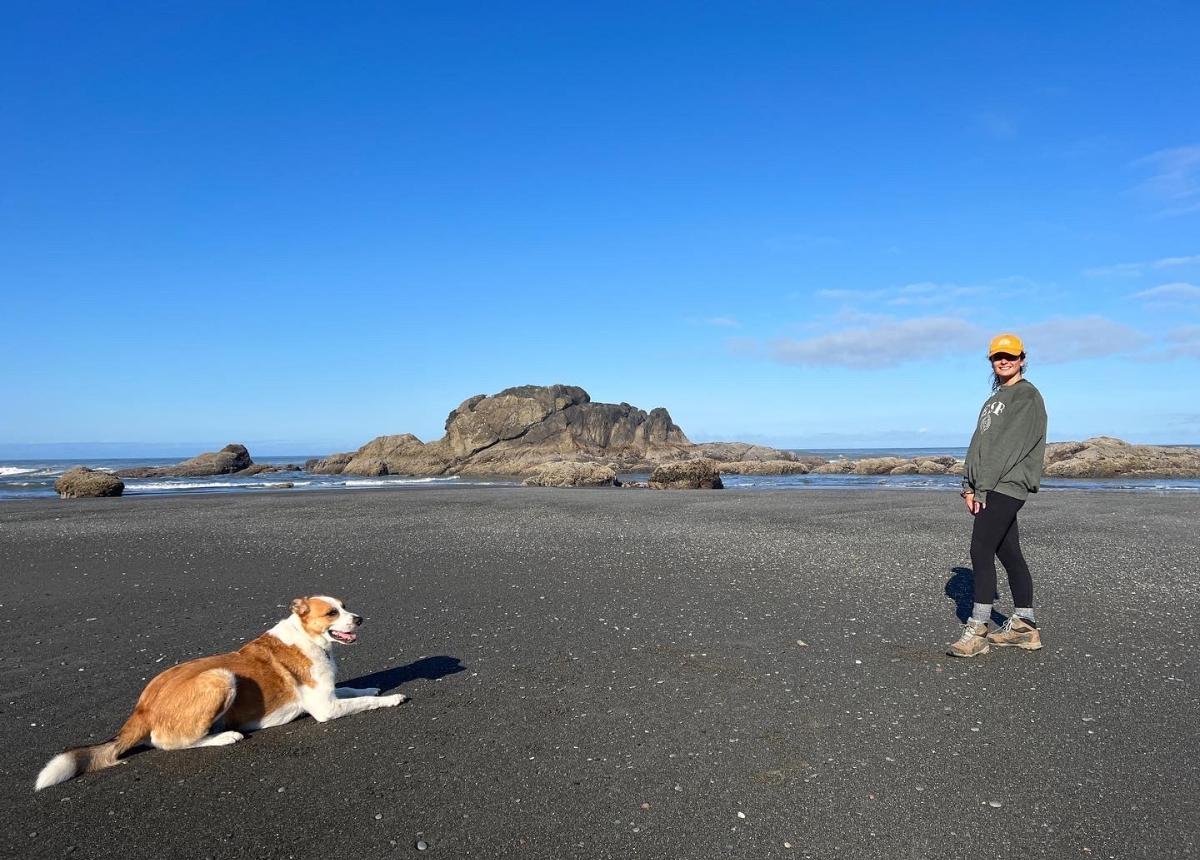Different Problems, Common Themes
Fri, July 14, 2023

Growing up on the east coast of Virginia, I’ve always felt a deep connection to the ocean and water resources. When I went away to college, this connection became a passion as I began to learn about the many difficulties and issues facing these natural resources. One of the main discussion topics in my environmental classes was often the Chesapeake Bay.
The Chesapeake Bay is an impressive water body that is about 200 miles long and between 2.8 miles at its narrowest and 30 miles at its greatest width. Of any coastal water body in the world, it has the largest land-to-water ratio (14:1) with more than 100,000 streams and rivers within its watershed. This massive watershed spans approximately 64,000 square miles and includes areas within Virginia, Maryland, New York, Pennsylvania, West Virginia, Washington D.C., and Delaware4. The Bay is home to 348 species of finfish and 173 species of shellfish, contributing to a large fishing and oystering economy1. With so much area being covered, what do you do when something goes wrong within the Bay?
Enter “dead zones”…
Dead zones are areas within bodies of water that have little to no oxygen causing marine life to suffocate. These areas can happen in various sizes and duration. Dead zones are caused by excess nitrogen and phosphorous pollution entering the water ways and causing large algae blooms. This alga then dies and sinks to the bottom of the water, where it decomposes. During this process, the oxygen within the surrounding water is stripped away, leaving hypoxic water. This water is not suitable for marine life and can end up killing large amounts of fish/shellfish creating dead zones. These dead zones have been reported in the Chesapeake Bay dating back to the 1930s3.
The excess nitrogen and phosphorous comes from agricultural runoff (manure and fertilizer), suburban/urban runoff (fertilizer, septic systems, storm water), air pollution (cars, factories, planes), and wastewater treatment plants (treated water can contain large amounts of nutrients). Another contribution to the problem is increased deforestation within the watershed, reducing the amount of area that is naturally filtering this water and increasing the amount of impenetrable surface area for runoff to accumulate.
Dead zones are not only harmful for marine life, but can disrupt many industries such as fishing, oystering, and tourism. However, how do we fix this problem when only 3 states (and D.C.) are in contact with the actual Bay, and getting the surrounding states to reduce nutrient inputs could disrupt their industries? How do you get different stakeholders to care about an issue, when it may negatively impact them to do something about it? This question is really the root of most natural resource concerns.
In Washington and Oregon, how do you deal with the competing needs of loggers wanting to keep their jobs and support the timber industry, while also protecting old growth trees and unique habitats? Along the Colorado River, how are states at the headwaters supposed to care about leaving enough water for the more southern states when they have crops that need to be watered? Let alone, leave enough for our neighbors in Mexico.
Historically, the short answer seems to be litigation that leads to laws, and laws that lead to litigation. With the Clean Water Act passed in 1972, its main objective was to "restore and maintain the chemical, physical, and biological integrity of the Nation's waters." This led to the development of the 1st, 2nd, & 3rd Chesapeake Bay Agreements in 1983, 1987, 1992 respectively which included voluntary goals for reducing nutrient pollution by 2000, but only included Maryland, Pennsylvania, Virginia, and D.C1. Eventually the EPA was sued by the Chesapeake Bay Foundation for failing to require states to develop formal cleanup plans1. This is the trend, a vague law is made, the states do not implement or do not implement satisfactorily, and then there is a lawsuit. There are also lawsuits from the other side as well. After the lawsuit, the EPA did begin enforcing total maximum daily loads of nutrients for each state. That is when the Farm Bureau Federation began their lawsuit against these strict measures1. Ultimately, they failed after appealing all the way up to the supreme court. Back and forth it goes.
The problem with laws and litigation is that it takes time for things to go through the process and ultimately be implemented. In that time, the Chesapeake Bay was still dealing with excess nutrient loading, and 2022 evaluations show that overall, the Chesapeake Bay received a D+ rating, which is the same rating it received in 2020. This is the average over 13 indicators, with an A+ being the ultimate goal for the waterway.
It seems like if progress is made on one front; it loses momentum on another. How do we fix this? I would love to be able to end this blog post with a wonderful, succinct answer to that, but that is just not the world we live in currently. However, I do dream of a time when collaboration is the name of the game, and stakeholders not only care about their own needs but the needs of the greater good.
As a program manager at an environmental consulting agency, I do see the beginnings of this type of work. Working with forest collaboratives that are made up of diverse stakeholders, as well as government entities, most of my work involves hearing the competing needs and wants of these groups and creating work that is influenced by these goals, while also improving the integrity of our forest resources. This work is not always easy, but it is a start. It does give me hope that stakeholders in these large natural resource problems are beginning to see the value in collaboration, instead of just laws and litigation. I hope one day to check up on my beloved Chesapeake Bay to find that there has been more of a collaborative effort, and that those efforts have paid off! Until then, I will do what I can to improve the natural resources I do have access to, and keep my mind open to opportunities for collaboration.
Citations
1. Chesapeake Bay Foundation. (n.d.). The history of Chesapeake Bay cleanup efforts.
THE HISTORY OF CHESAPEAKE BAY CLEANUP EFFORTS. https://www.cbf.org/how-we-save-the-bay/chesapeake-clean-water-blueprint/the-history-of-bay-cleanup-efforts.html
2. Dead Zones - Chesapeake Bay Foundation. (n.d.). Retrieved June 12, 2023, from
https://www.cbf.org/issues/dead-zones/index.html
3. Diaz, R. J., & Rosenberg, R. (2008). Spreading dead zones and consequences for marine
ecosystems. Science, 321(5891), 926–929. https://doi.org/10.1126/SCIENCE.1156401
4. Facts and Formation - Chesapeake Bay (U.S. National Park Service). (n.d.). Retrieved June 12, 2023, from https://www.nps.gov/chba/learn/nature/facts-and-formation.htm

